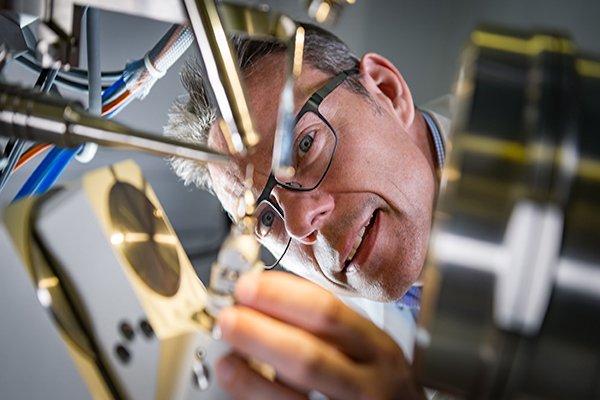Scientists engineer plastics-eating enzyme
Photography John McGeehan and colleagues inadvertently engineered an enzyme better at degrading plastic than the enzyme which evolved in nature. Researchers in the US and UK have engineered an enzyme that could help solve the problem of PET bottle litter.
The breakthrough is the latest in a series of tantalising research results hinting that certain enzymes and microbes that use them might pave a way to degrade mountains of plastics scrap.
Scientists at the US Department of Energy's National Renewable Energy Laboratory and the University of Portsmouth say they have tweaked a bacterium's enzyme to improve its ability to degrade PET. The natural enzyme is in a bacterium called Ideonella sakaiensis, which researchers recently found was degrading PET in a Japanese waste recycling centre.
Millions of tons of PET bottles are made each year and many of them are tossed aside as litter. PET can last hundreds of years in a natural environment.
"We can all play a significant part in dealing with the plastic problem, but the scientific community who ultimately created these 'wonder materials', must now use all the technology at their disposal to develop real solutions," explained one of the researchers, John McGeehan, in an April 16 news release. McGeehan is director of the Institute of Biological and Biomedical Sciences in the School of Biological Sciences at University of Portsmouth.
 | |
McGeehan and colleagues were examining the structure of the natural, PET-degrading enzyme when they found they could increase the degradation rate by manipulating the chemical structure of the enzyme. The improvement was modest, but the scientists believe bigger improvements are possible by modifying the protein portion of the enzyme.
Independent of the US DOE and UK work, researchers at the Korea Advanced Institute of Science and Technology were studying the natural enzyme's structure and they too claimed they found a way to improve its PET degradation potential. The U.S. and U.K. results were published in the peer-reviewed Proceedings of the National Academy of Sciences journal and then announced in a Portsmouth University news release. The Korean research was published in the peer-reviewed Nature Communications and in a subsequent news release from KAIST.
Researchers found the natural and improved enzymes first act by slipping into the folds of the PET long-chain molecule. Degradation begins there when the polymer chain is cut in two by the enzyme. Degradation then proceeds to the termini of the severed polymer chain.
- autor:
- PNE





















